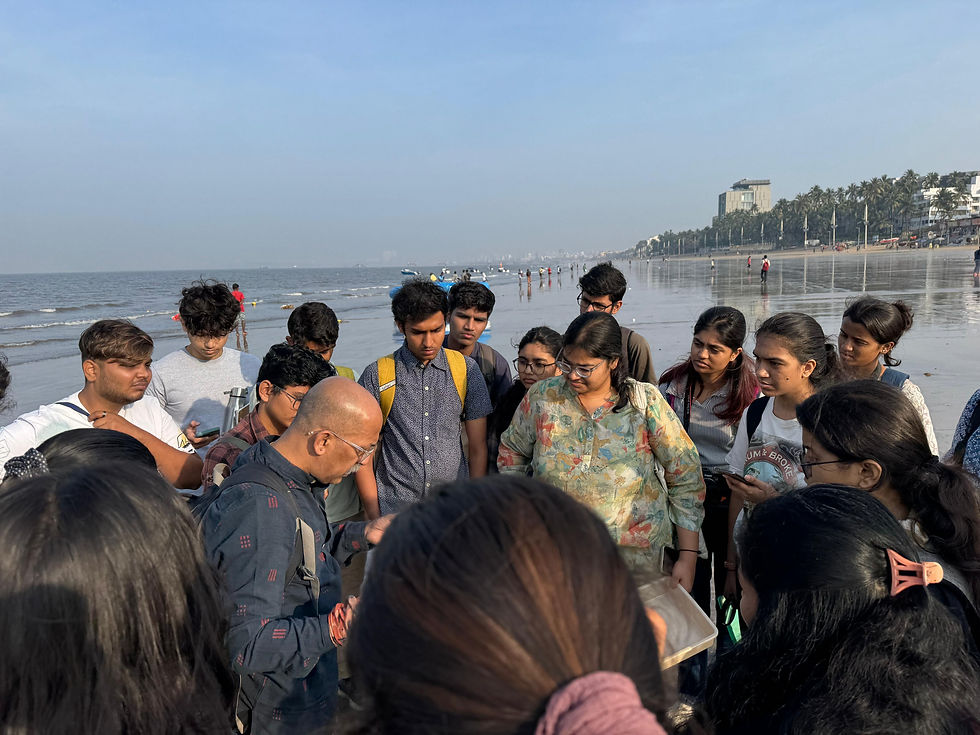Coastal Life Of Mumbai
- Nihar Gondhalekar
- Feb 20
- 2 min read
Updated: Aug 3
Studio Co-ordinator: Anand Pendharkar
Nihar Gondhalekar
This course was structured around understanding the socio-ecological connections between the coastal communities of Mumbai, the people living in the city, and its non-human residents. We began by examining the intricate web of relationships that exist in coastal environments, between land and sea, humans and non-humans, urban infrastructure and marine ecosystems.

Through a series of site visits and studio sessions, we explored the diverse ecosystems that line Mumbai’s shores. These include mangroves, mudflats, intertidal zones, and urban fishing hubs. The sites we visited were Gorai Creek, Juhu Beach, Sassoon Docks, Haji Ali, and Bhandup Pumping Station; each presenting a unique perspective into Mumbai’s ecological fabric. At each location, we documented our observations through photographs, videos, audio recordings and collecting samples, building a sensory archive of coastal life.We encountered a wide range of biodiversity, from marine organisms like algae, sponges, sea slugs, shells, and crabs to birds such as gulls, herons, and kingfishers that rely on these habitats for survival. These site explorations revealed how closely the city’s non-human inhabitants are connected with its human activity, often thriving in neglected corners, or struggling against pollution, reclamation, and overfishing.

One of the concepts we engaged with was biomimicry. We understood how natural forms, processes, and systems inspire human design. Observing the intricate patterns in shell structures or the spiral inside resembling a spiral staircase made us realize how much contemporary design and architecture owes to nature’s ingenuity. This lens allowed us to reflect not only on how humans shape the environment, but also on how nature, in turn, shapes human imagination. Throughout the course, we became aware of the fragility of these ecosystems. Our studio sessions helped us connect field observations with critical discussions about conservation, urban planning, and the role of public awareness in ecological preservation.

To conclude, we designed a board game aimed at educating players about Mumbai’s coastal ecosystems. The game mechanics revolved around making choices that either protected or harmed the coastal environment, prompting players to think about the consequences of their actions. This project helped us translate academic and field-based knowledge into a playful, interactive medium for awareness.
This is the board game we designed, Coastal Connections. It’s based on Mumbai’s shoreline and helps players learn about coastal ecosystems, communities, and the impact of human choices in a fun and interactive way.
Overall, this course provided us with a deeper appreciation of Mumbai’s coastal edges, not as peripheral spaces, but as vital, living systems that support both human and non-human life.

















Comments